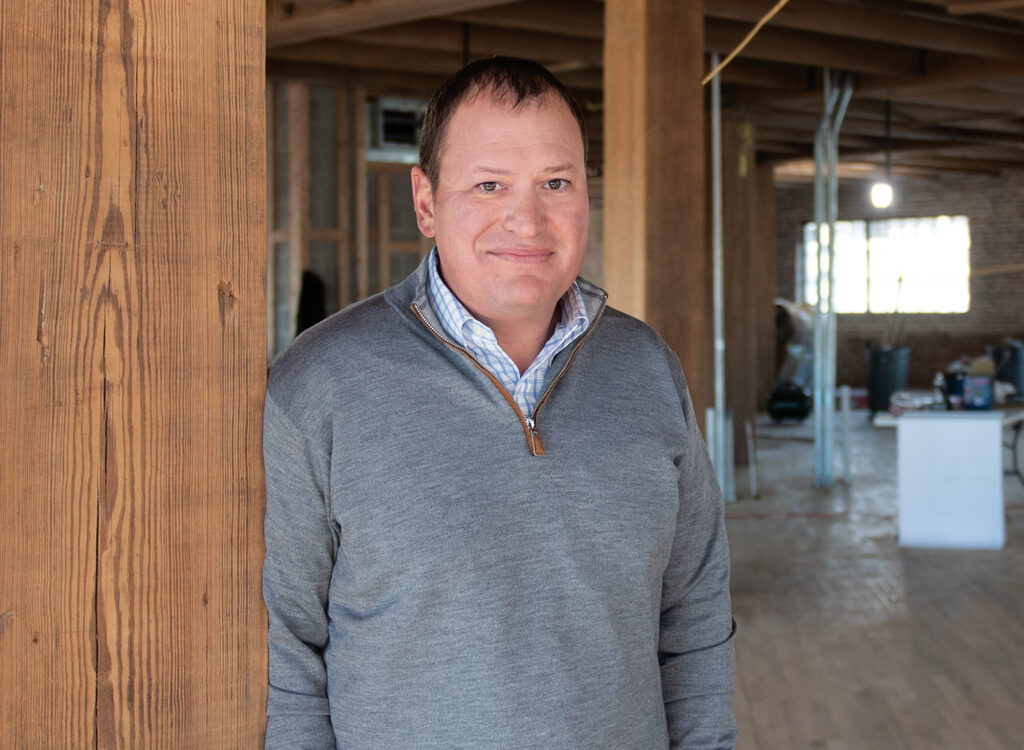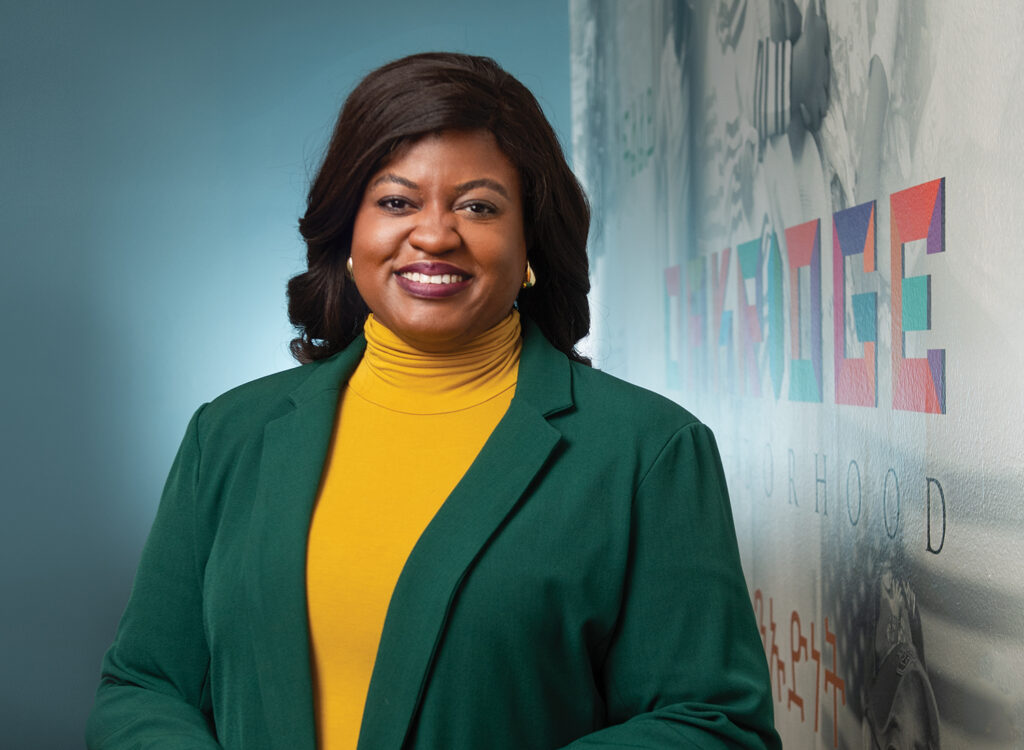In the fast lane
Wanke juggles marketing, planning at DART

JOE GARDYASZ Oct 14, 2016 | 11:00 am
5 min read time
1,279 wordsBusiness Record Insider, Lift IOWA, TransportationAmanda Wanke is pretty revved up about her career right now.
She’s a polished communication professional who is learning about the latest in transportation industry improvements through her work at the Des Moines Area Regional Transit Authority, or DART.
Wanke, is DART’s chief engagement and communications officer. That means she often answers questions about changes in routes, or perhaps the agency’s DART Forward 2035 plan. But it also means she is in charge of the team that is developing the long-range plans, making sure companies and customers know about DART’s offerings and route changes, and training people on how to use the transit system. DART provides almost 5 million rides a year.
While CEO Elizabeth Presutti and the board run the place, Wanke has become increasingly visible in her role.
We stopped at DART Central Station, the bus hub that resembles an airport in its design and organization, to ask Wanke about her work at a time when mass transit is very high on local residents’ and elected officials’ lists of priority items.
Can you tell us about the parts of your job that go beyond straight communications work?
One of the key components of my role that is especially visible this month is transportation planning. We just shared a draft of the updated DART Forward 2035 Transit Services Plan with the public and look forward to gathering feedback at public meetings and the website at www.dartforward2035.com. As you are aware, this plan was originally adopted by the DART Commission in 2011 as a 25-year blueprint for our regional transit system, and this five-year review and update is critically important to ensuring our community stays a number one place to work, live and play. In addition to leading transportation planning, I, along with my engagement team, am responsible for marketing, communications and customer and community relations. My background is primarily in public relations, including working with businesses, government and key stakeholders, so those parts of the job are a natural fit. Transit is a new industry for me, but thankfully I am surrounded by experts who have been most patient teaching me about specific aspects of transportation planning and the many programs we make available, such as RideShare, DART’s vanpool program.
So there is a lot of outreach?
Yes. Outreach has always been done on a certain level, but through the creation of the chief engagement and communications officer position — which is new to the organization — it was taken to a new level of coordination and organization.This position takes all those external-facing elements of the organization and has them work more closely together so that we can have a focused and organized engagement effort in our community. Our team works with everyone from business organizations and government leadership to human services agencies and media as well as our customers.
So what else is new in that transition?
One of the changes includes some restructuring of staff to better meet current needs. For example, our Rideshare program used to have a Rideshare coordinator. We now have that position as a business development coordinator so to work with businesses on all of our product offerings — from RideShare to Unlimited Access. We want to make sure that businesses are aware of the services we have. Raising awareness of our programs is a top priority. Specifically, the demand we see for vanpools often depends on business knowledge of the options. For example, our service area for the RideShare program is most of Central Iowa far beyond where we offer our fixed-route transit service, so we are working in areas such as Pella, Newton and Perry to make sure they’re aware how the RideShare program can benefit them.
Have low gas prices hurt the van program?
We definitely see a correlation between vanpool usage and gas prices, so ridership is currently a little lower than it was when gas prices were higher a few years ago, but we’re looking to counter that by raising the awareness of the program. Even on top of the cost savings, there are so many benefits to carpooling, including all the many things you can do instead of driving — read, work, sleep or play Pokemon Go. We also have our unlimited access program through which businesses contract with DART to provide unlimited transit rides for their employees. We currently have 15 businesses that contract with us; their employees can just show their badge and ride anywhere, anytime. This includes Principal Financial Group Inc., Nationwide Insurance, UnityPoint Health, Wellmark and others.
Do you ever have smaller companies sign up?
The Des Moines Area Metropolitan Planning Organization is a member. We’re also looking at what new ways we can partner with businesses, and one thing that may make more of that possible will be the launch of mobile ticketing in 2017, which our information technology team is leading. Mobile ticketing would allow people to pay to ride the bus with their phones — they wouldn’t have to have cash or a pass. People who don’t have smartphones would still have all the same options to pay that they currently have. As we look to the future, we would like to partner with other mobility options such as BCycle and Uber so that coordinated travel and payment can occur through DART’s mobile ticketing application.
What planning work do you do?
As we discussed earlier, I have been leading the DART Forward 2035 plan (the agency’s major long-term visioning process). There is also day-to-day planning, which we work closely with the operations team on, to get the buses on the roads, on route and on time. That’s a partnership between our planning staff and the operations staff that reports to our chief operating officer. When we make any changes in service, such as the Grand Avenue bridge closure, it’s a team effort to work with all the impacted parties. This involves efforts from the engagement team — including marketing and communications, customer service and planning — as well as with others across the organization to make sure riders, member governments, businesses and others know about any changes in DART services. I’ve learned a lot about what it takes to put public transit service on the road every day, and I still have a lot to learn. But it all comes together in how we serve our community well.
How are you wired?
When I take the Myers-Briggs (personality inventory), I am always right on the line between introvert and extrovert. I enjoy being out in the community building relationships, but I also appreciate time at my desk to strategize and vision for the future. One of the reasons I was excited about this job was the challenge it provides. We’ve been very busy with lots of initiatives, including new routes, the DART Forward 2035 plan, additional programs and more. Elizabeth and other members of the leadership team will remind me what I said in my interview: “I don’t like to be bored.” I can definitely say I’m not bored. I really enjoy being a part of this community. I want to be involved in things that are happening, and I want a challenge. I want to make a difference in my community.
Would you think about moving up the chain of command, at DART or somewhere else?
Only being a year into this, I still have a lot to learn. I continue to learn about transit and about this community. I’m excited to have the opportunity to be in the Greater Des Moines Leadership Institute this year, which is a great way to learn more about leadership in this great region.









